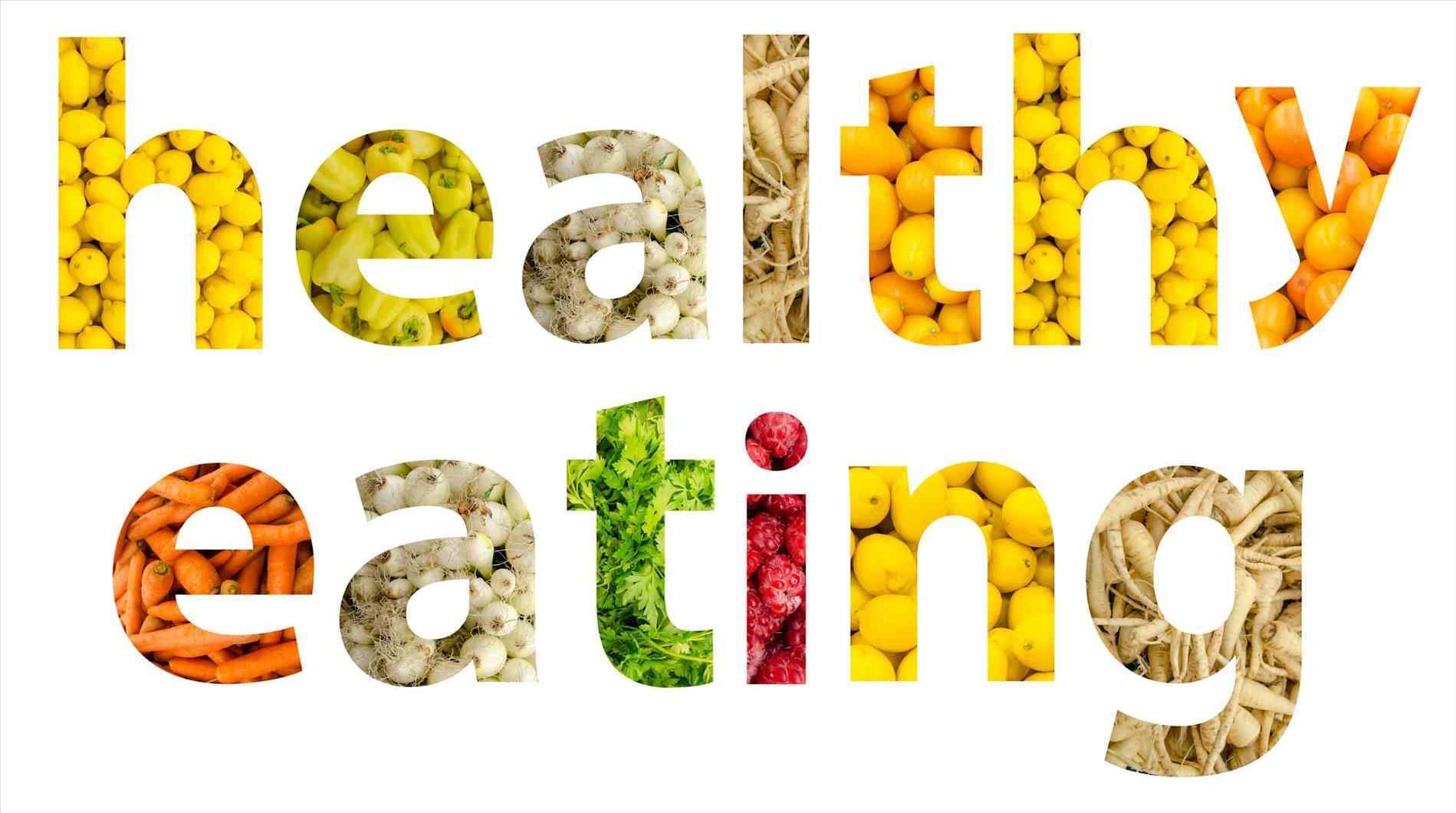The Power of a Plant-Based Diet: Benefits of Going Whole Food
 |
| Benefits of a Whole Food Plant-Based Diet, Healthnews // Plant-Based Cooking |
Discover the Nutritional Advantages and Health Benefits of a Whole Food Plant-Based Diet
Healthnews: When it comes to healthy eating, there are many different approaches you can take. One of the most popular options in recent years has been a whole food plant-based diet. This way of eating emphasizes foods that are minimally processed and derived from plants, such as fruits, vegetables, whole grains, legumes, nuts, and seeds. If you're curious about this dietary approach, here are some of the benefits you can expect.
- Better weight management: A whole food plant-based diet is naturally low in calories and high in fiber, which can help you feel full and satisfied while consuming fewer calories overall, leading to weight loss.
- Improved heart health: Plant-based foods are naturally low in saturated fat and high in fiber, which can help reduce your risk of heart disease. Studies have also found that following a plant-based diet can help lower blood pressure and improve cholesterol levels.
- Reduced risk of chronic diseases: A whole food plant-based diet is rich in antioxidants and other nutrients that can help reduce your risk of chronic diseases such as cancer, diabetes, and Alzheimer's disease.
- Improved gut health: The fiber found in plant-based foods can help improve gut health by promoting healthy digestion and reducing the risk of certain digestive issues like constipation and colon cancer.
- Environmental sustainability: A whole food plant-based diet is also better for the environment as it reduces the carbon footprint, conserves water, and reduces pollution.
Following a whole food plant-based diet, you can enjoy these benefits and improve your overall health and well-being.
Understanding the Basics of a Whole Food Plant-Based Diet
At its core, a whole food plant-based diet is all about maximizing the nutrients you get from plant-based foods. This means avoiding highly processed foods and instead focusing on whole, minimally processed options. Some people choose to follow a vegan diet, which excludes all animal products, while others may include small amounts of dairy or meat. However, the emphasis is always on plant-based foods.
Here are some of the basics of this dietary approach:
- Focus on whole foods: A whole food plant-based diet is based on whole, minimally processed foods. This means that you should avoid highly processed foods like refined grains, added sugars, and processed meats.
- Emphasize plant foods: The majority of your diet should come from plant sources, such as fruits, vegetables, whole grains, legumes, nuts, and seeds. These foods are rich in fiber, vitamins, minerals, and other nutrients that are essential for optimal health.
- Limit animal products: While a whole food plant-based diet does not necessarily exclude animal products, it does emphasize limiting them. Animal products like meat, dairy, and eggs should be consumed in moderation and should be of high quality.
- Avoid added oils and fats: A whole food plant-based diet avoids the use of added oils and fats. Instead, healthy fats can be obtained from whole food sources like nuts, seeds, and avocados.
- Incorporate variety: To ensure that you are getting a wide range of nutrients, it is important to incorporate a variety of plant foods in your diet. This can include different types of fruits, vegetables, grains, legumes, nuts, and seeds.
R E A D :
- Balancing Your Plate Exploring the Health Benefits and Guidelines of a Macrobiotic Diet
- The Flexitarian Diet Is
- 10 Shocking Diet Hacks for Rapid Weight Loss Experts Reveal the Top Secrets
Foods to Include in a Whole Food Plant-Based Diet
When you're following a whole food plant-based diet, there are many different foods you can include in your meals. Some of the key options include fruits like berries, apples, and oranges, vegetables like leafy greens, broccoli, and sweet potatoes, whole grains like quinoa and brown rice, legumes like lentils and chickpeas, nuts like almonds and walnuts, and seeds like chia and flax seeds. These foods are rich in fiber, vitamins, and minerals that your body needs to function properly.
Here are some of the foods you should include in your diet:
- Fruits: Apples, bananas, berries, oranges, and other fruits are rich in fiber, vitamins, and antioxidants.
- Vegetables: Leafy greens, cruciferous vegetables, root vegetables, and other colorful vegetables are packed with nutrients and fiber.
- Whole grains: Brown rice, quinoa, oats, and other whole grains are a great source of fiber, protein, and other essential nutrients.
- Legumes: Beans, lentils, chickpeas, and other legumes are a good source of protein, fiber, and other important nutrients.
- Nuts and seeds: Almonds, walnuts, chia seeds, and flaxseeds are a good source of healthy fats, protein, and fiber.
- Plant-based milks: Almond milk, soy milk, and other plant-based milks are a good alternative to dairy milk.
- Tofu and tempeh: Tofu and tempeh are a good source of protein and can be used as a substitute for meat.
 |
| Benefits of a Whole Food Plant-Based Diet, Healthnews // Active health |
How a Whole Food Plant-Based Diet Can Help You Lose Weight
One of the most compelling reasons to try a whole food plant-based diet is that it can help you lose weight. This dietary approach is naturally low in calories and high in fiber, which can help you feel full and satisfied while consuming fewer calories overall. Additionally, research has shown that people who follow a plant-based diet tend to have lower BMIs and lower rates of obesity than those who eat a more traditional Western diet.
A whole food plant-based diet can help you lose weight in several ways:
- High in fiber: Whole plant foods are naturally high in fiber, which can help you feel full and satisfied, leading to reduced calorie intake.
- Low in calories: A whole food plant-based diet is naturally low in calories and high in nutrients, which means that you can eat more food while consuming fewer calories overall.
- Low in saturated fat: Animal products like meat and dairy are high in saturated fat, which can contribute to weight gain. A whole food plant-based diet is naturally low in saturated fat and high in healthy fats from sources like nuts, seeds, and avocados.
- Reduces inflammation: Chronic inflammation is associated with weight gain. A whole food plant-based diet is rich in anti-inflammatory nutrients like fiber, vitamins, and antioxidants, which can help reduce inflammation and support weight loss.
- Encourages healthy habits: A whole food plant-based diet encourages healthy eating habits like cooking at home, meal planning, and choosing nutrient-dense foods over processed snacks and meals.
By adopting a whole food plant-based diet, you can promote weight loss and improve your overall health and well-being. However, it is important to remember that weight loss is a complex process and that a whole food plant-based diet is just one factor that can contribute to weight loss. Other factors like exercise, stress management, and sleep also play a role in achieving and maintaining a healthy weight.
The Connection Between a Whole Food Plant-Based Diet and Heart Health
Another major benefit of a whole food plant-based diet is that it can help protect your heart health. This is because plant-based foods are naturally low in saturated fat and high in fiber, which can help reduce your risk of heart disease. Studies have also found that following a plant-based diet can help lower blood pressure and improve cholesterol levels, both of which are important markers of heart health.
Here are some of the ways this dietary approach can improve heart health:
- Lowers cholesterol: A whole food plant-based diet is naturally low in cholesterol and saturated fat, which are major contributors to high cholesterol levels. By reducing intake of these substances and increasing consumption of plant foods, cholesterol levels can be lowered, reducing the risk of heart disease.
- Reduces inflammation: Chronic inflammation has been linked to the development of heart disease. Whole plant foods are naturally rich in anti-inflammatory nutrients like fiber, vitamins, and antioxidants, which can help reduce inflammation and promote heart health.
- Lowers blood pressure: High blood pressure is a major risk factor for heart disease. A whole food plant-based diet is naturally low in sodium and high in potassium, which can help lower blood pressure and reduce the risk of heart disease.
- Improves endothelial function: The endothelium is a layer of cells that lines the blood vessels. A healthy endothelium is essential for maintaining proper blood flow and preventing heart disease. Studies have shown that a whole food plant-based diet can improve endothelial function and reduce the risk of heart disease.
- Promotes weight loss: Excess weight is a risk factor for heart disease. A whole food plant-based diet can promote weight loss and improve body composition, reducing the risk of heart disease.
If you're interested in trying a whole food plant-based diet, there are a few things you can do to make the transition easier. Start by gradually incorporating more plant-based foods into your diet, such as swapping out meat for beans in a recipe or incorporating more veggies into your meals. You can also experiment with new
recipes and cuisines to keep things interesting. Finally, consider working with a registered dietitian to ensure you're getting all the nutrients you need as you make the switch to a whole food plant-based diet. With time and practice, you can reap the many benefits of this healthy and delicious way of eating.
Making the switch to a whole food plant-based diet can seem daunting at first, but it doesn't have to be. Here are some tips for transitioning to this dietary approach:
- Start slow: Don't feel like you have to switch to a whole food plant-based diet overnight. Start by incorporating more plant-based meals into your diet and gradually reducing your intake of animal products.
- Learn new recipes: Explore new recipes that are centered around whole plant foods. There are many resources available online and in cookbooks to help you find delicious plant-based meals.
- Experiment with new ingredients: Whole plant foods like legumes, whole grains, and vegetables can be prepared in many different ways. Experiment with different preparations to find what you enjoy.
- Stock up on essentials: Make sure you have plenty of staples like beans, whole grains, and vegetables on hand to make plant-based meals easy and convenient.
- Focus on nutrient density: Whole plant foods are naturally rich in nutrients like fiber, vitamins, and minerals. Focus on incorporating a variety of nutrient-dense foods into your diet.
- Seek support: Joining a community of like-minded individuals can be helpful in making the transition to a whole food plant-based diet. Look for online groups or local meetups to connect with others who share your dietary goals.
Remember that making the switch to a whole food plant-based diet is a process, and that it's important to be patient and kind to yourself as you navigate this transition. With time and practice, you can adopt this dietary approach and enjoy the many health benefits that come with it.
> A whole food plant-based diet can offer numerous health benefits, including weight loss, improved heart health, and reduced risk of chronic diseases. By focusing on whole, nutrient-dense plant foods like fruits, vegetables, whole grains, and legumes, you can enjoy a varied and satisfying diet that promotes optimal health. While making the switch to a whole food plant-based diet may require some effort and adjustment, the benefits are well worth it. So if you're looking to improve your health and wellbeing, consider incorporating more plant-based meals into your diet and see how it can benefit you.












